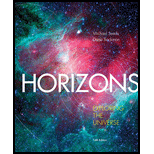
Horizons: Exploring the Universe (MindTap Course List)
14th Edition
ISBN: 9781305960961
Author: Michael A. Seeds, Dana Backman
Publisher: Cengage Learning
expand_more
expand_more
format_list_bulleted
Textbook Question
Chapter 19, Problem 9RQ
What evidence indicates that some asteroids have differentiated?
Expert Solution & Answer
Want to see the full answer?
Check out a sample textbook solution
Chapter 19 Solutions
Horizons: Exploring the Universe (MindTap Course List)
Ch. 19 - What do Widmanst?tten patterns indicate about the...Ch. 19 - What do chondrules tell you about the history of...Ch. 19 - Why are there no chondrules in achondritic...Ch. 19 - Why do astronomers refer to carbonaceous...Ch. 19 - Prob. 5RQCh. 19 - Prob. 6RQCh. 19 - Why do astronomers think the asteroids were never...Ch. 19 - Prob. 8RQCh. 19 - What evidence indicates that some asteroids have...Ch. 19 - What evidence indicates that some asteroids have...
Ch. 19 - Prob. 11RQCh. 19 - What is the difference between a gas tail and a...Ch. 19 - Prob. 13RQCh. 19 - What are the hypotheses for how the bodies in the...Ch. 19 - Prob. 15RQCh. 19 - Prob. 1DQCh. 19 - Do you think the government should spend money to...Ch. 19 - Prob. 1PCh. 19 - If a single asteroid 1 km in diameter were to be...Ch. 19 - If a trillion (1012) asteroids, each 1 km in...Ch. 19 - Prob. 4PCh. 19 - What is the maximum angular diameter of the...Ch. 19 - Prob. 6PCh. 19 - Prob. 7PCh. 19 - Prob. 8PCh. 19 - What is the orbital period of a comet nucleus in...Ch. 19 - The mass of an average comet’s nucleus is about...Ch. 19 - Prob. 1LTLCh. 19 - Prob. 2LTLCh. 19 - Prob. 3LTL
Knowledge Booster
Learn more about
Need a deep-dive on the concept behind this application? Look no further. Learn more about this topic, physics and related others by exploring similar questions and additional content below.Similar questions
- In addition to the ones mentioned in Exercise 13.3, what is the third, rarer class of asteroids?arrow_forwardWhat methods do scientists use to distinguish a meteorite from terrestrial material?arrow_forwardHow is the composition of meteorites related to the formation and evolution of asteroids?arrow_forward
- Give at least two reasons today’s astronomers are so interested in the discovery of additional Earthapproaching asteroids.arrow_forwardIn what ways are meteorites different from meteors? What is the probable origin of each?arrow_forwardWhat is the difference between a meteoroid and an asteroid? Is there a sharp distinction?arrow_forward
- Why do astronomers conclude that asteroids were never part of a full-sized planet?arrow_forwardWhy is it more useful to classify meteorites according to whether they are primitive or differentiated rather than whether they are stones, irons, or stony-irons?arrow_forwardHow would studying the chemical composition of only the largest, brightest, and most easily observed asteroids yield potentially misleading information about asteroids in general? Why is this called a selection effect?arrow_forward
arrow_back_ios
SEE MORE QUESTIONS
arrow_forward_ios
Recommended textbooks for you
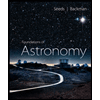 Foundations of Astronomy (MindTap Course List)PhysicsISBN:9781337399920Author:Michael A. Seeds, Dana BackmanPublisher:Cengage Learning
Foundations of Astronomy (MindTap Course List)PhysicsISBN:9781337399920Author:Michael A. Seeds, Dana BackmanPublisher:Cengage Learning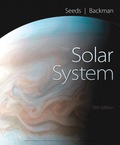
 AstronomyPhysicsISBN:9781938168284Author:Andrew Fraknoi; David Morrison; Sidney C. WolffPublisher:OpenStax
AstronomyPhysicsISBN:9781938168284Author:Andrew Fraknoi; David Morrison; Sidney C. WolffPublisher:OpenStax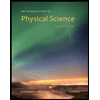 An Introduction to Physical SciencePhysicsISBN:9781305079137Author:James Shipman, Jerry D. Wilson, Charles A. Higgins, Omar TorresPublisher:Cengage Learning
An Introduction to Physical SciencePhysicsISBN:9781305079137Author:James Shipman, Jerry D. Wilson, Charles A. Higgins, Omar TorresPublisher:Cengage Learning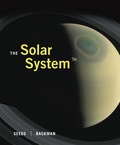
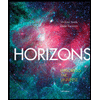 Horizons: Exploring the Universe (MindTap Course ...PhysicsISBN:9781305960961Author:Michael A. Seeds, Dana BackmanPublisher:Cengage Learning
Horizons: Exploring the Universe (MindTap Course ...PhysicsISBN:9781305960961Author:Michael A. Seeds, Dana BackmanPublisher:Cengage Learning

Foundations of Astronomy (MindTap Course List)
Physics
ISBN:9781337399920
Author:Michael A. Seeds, Dana Backman
Publisher:Cengage Learning


Astronomy
Physics
ISBN:9781938168284
Author:Andrew Fraknoi; David Morrison; Sidney C. Wolff
Publisher:OpenStax

An Introduction to Physical Science
Physics
ISBN:9781305079137
Author:James Shipman, Jerry D. Wilson, Charles A. Higgins, Omar Torres
Publisher:Cengage Learning


Horizons: Exploring the Universe (MindTap Course ...
Physics
ISBN:9781305960961
Author:Michael A. Seeds, Dana Backman
Publisher:Cengage Learning
Kepler's Three Laws Explained; Author: PhysicsHigh;https://www.youtube.com/watch?v=kyR6EO_RMKE;License: Standard YouTube License, CC-BY